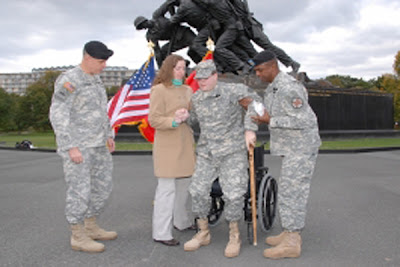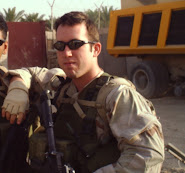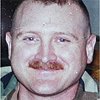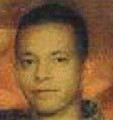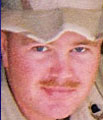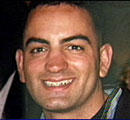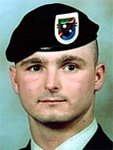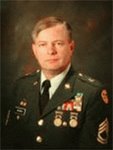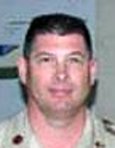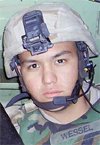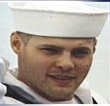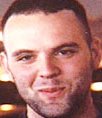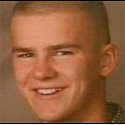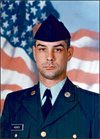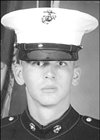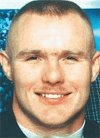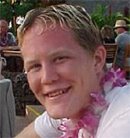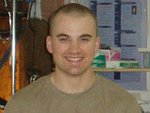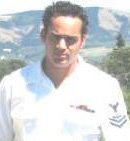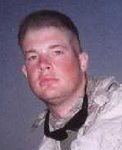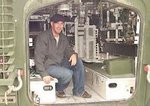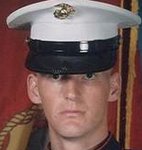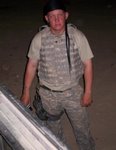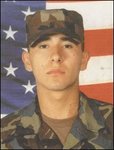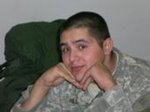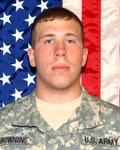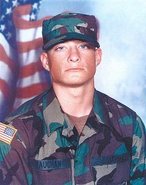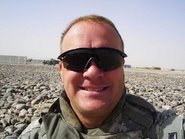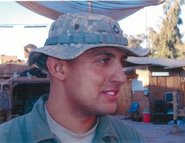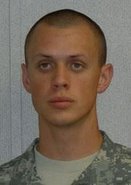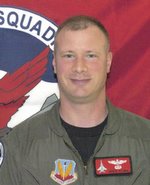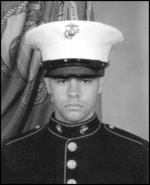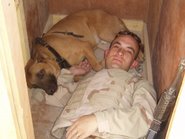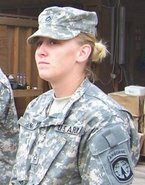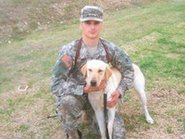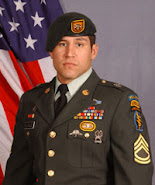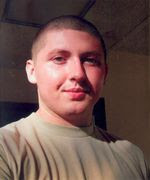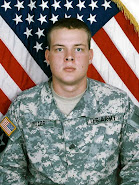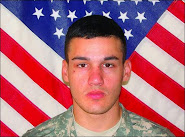The Iraqi Army Stands Up
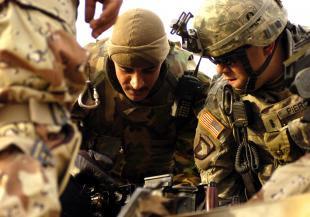 Iraqi Army Col. Musfab Yousif works with 1st Lt. David Pierce to repair a 12.7 mm Machine gun during a raid in Ad Dawr, near Tikrit, Iraq, November 21. Yousif is the executive officer of the 1st Battalion, 1st Brigade, 4th Iraqi army, and Pierce is with the 1st BN Military Transition Team
Iraqi Army Col. Musfab Yousif works with 1st Lt. David Pierce to repair a 12.7 mm Machine gun during a raid in Ad Dawr, near Tikrit, Iraq, November 21. Yousif is the executive officer of the 1st Battalion, 1st Brigade, 4th Iraqi army, and Pierce is with the 1st BN Military Transition Team Iraqi army soldiers and U.S. Army Soldiers work together to repair a machine gun on an IA Humvee in Ad Dawr, near Tikrit, Iraq, Nov. 21. The Iraqi soldiers from the 1st Battalion, 1st Brigade, 4th Iraqi army, led a pre-dawn raid that was accompanied by U.S. Soldiers from the 1st BN. Military Transition Team.
Iraqi army soldiers and U.S. Army Soldiers work together to repair a machine gun on an IA Humvee in Ad Dawr, near Tikrit, Iraq, Nov. 21. The Iraqi soldiers from the 1st Battalion, 1st Brigade, 4th Iraqi army, led a pre-dawn raid that was accompanied by U.S. Soldiers from the 1st BN. Military Transition Team.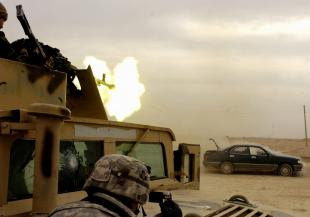 Iraqi army Col. Msfab Yousif uses a 12.7 mm machine gun to destroy a vehicle that was used in illegal checkpoint activities by insurgents in Ad Dawr near Tikrit, Iraq, Nov. 21. Yousif is the executive officer of the 1st Battalion, 1st Brigade, 4th Iraqi army, and was leading the raid to find insurgents operating illegal checkpoints.
Iraqi army Col. Msfab Yousif uses a 12.7 mm machine gun to destroy a vehicle that was used in illegal checkpoint activities by insurgents in Ad Dawr near Tikrit, Iraq, Nov. 21. Yousif is the executive officer of the 1st Battalion, 1st Brigade, 4th Iraqi army, and was leading the raid to find insurgents operating illegal checkpoints.  Iraqi Army Col. Msfab Yousif reloads his AK-47 after using it to destroy a vehicle that was used in illegal checkpoint activities by insurgents in Ad Dawr near Tikrit; Iraq; Nov. 21. Yousif is the executive officer of the 1st Battalion, 1st Brigae, 4th Iraqi army and was leading the raid to find insurgents operating illegal checkpoints.
Iraqi Army Col. Msfab Yousif reloads his AK-47 after using it to destroy a vehicle that was used in illegal checkpoint activities by insurgents in Ad Dawr near Tikrit; Iraq; Nov. 21. Yousif is the executive officer of the 1st Battalion, 1st Brigae, 4th Iraqi army and was leading the raid to find insurgents operating illegal checkpoints. An improvised explosive device is detonated under a bridge in Ad Dawr, near Tikrit, Iraq, Nov. 21. Iraqi Army soldiers were tipped off to the device that was emplaced on the route the unit was traveling on. A U.S. Army Explosive Ordnance Disposal team detonated the device in place.
An improvised explosive device is detonated under a bridge in Ad Dawr, near Tikrit, Iraq, Nov. 21. Iraqi Army soldiers were tipped off to the device that was emplaced on the route the unit was traveling on. A U.S. Army Explosive Ordnance Disposal team detonated the device in place. Iraqi army Col. Musfab Yousif exchanges information with Capt. Adrian Cole during a raid in Ad Dawr, near Tikrit, Iraq, Nov. 21. Yousif is the executive officer of the 1st Battalion, 1st Brigade, 4th Iraqi army, and was leading the raid to find insurgents operating illegal checkpoints. Cole is with the 1st BN Military Transition Team, who was coordinating coalition assets to the IA.
Iraqi army Col. Musfab Yousif exchanges information with Capt. Adrian Cole during a raid in Ad Dawr, near Tikrit, Iraq, Nov. 21. Yousif is the executive officer of the 1st Battalion, 1st Brigade, 4th Iraqi army, and was leading the raid to find insurgents operating illegal checkpoints. Cole is with the 1st BN Military Transition Team, who was coordinating coalition assets to the IA. Army Sgt. Dustin McCormick searches a cornfield for hidden caches in Ad Dawr, near Tikrit, Iraq, Nov. 21. McCormick was working with the 1st Battalion Military Tranistion Team, who was assisting the 1st Battalion, 1st Brigade, 4th Iraqi army during a raid to find insurgents operating illegal checkpoints in the area.
Army Sgt. Dustin McCormick searches a cornfield for hidden caches in Ad Dawr, near Tikrit, Iraq, Nov. 21. McCormick was working with the 1st Battalion Military Tranistion Team, who was assisting the 1st Battalion, 1st Brigade, 4th Iraqi army during a raid to find insurgents operating illegal checkpoints in the area.Multi-National Division – North Public Affairs Office
By Spc. Eric A. Rutherford, 115th Mobile Public Affairs Detachment
TIKRIT, Iraq – Iraqi army soldiers led a raid into an area of Ad Dawr with Iraqi police and a small contingent of U.S. Soldiers, Nov. 21, to put a stop to insurgent activities there.
The 1st Battalion of the 1st Brigade, 4th Iraqi army led the pre-dawn raid into the area to capture insurgents and disrupt illegal traffic checkpoints used by those insurgents to rob and kill local Iraqis. The Iraqi police provided security for the team. The U.S. Army Military Transition Team of the 1st Brigade, 101st Airborne Division provided guidance and support for the Iraqi army who planned and executed the mission.
Maj. Jackie Kaina of the 1st Brigade, 4th Iraqi army MiTT said the operations are driven by intelligence, which is mostly gathered by the Iraqi army. The mission was coordinated by the IA when an informant who had been ostracized by the insurgents came forward with information.
The operation, called Hellstorm, was a success in that the IA captured several of the High-Value Individuals on their list, and in the process seized several vehicles used in the illegal operations. They also discovered an emplaced improvised explosive device hidden under a bridge. The MiTT called in a U.S. Explosive Ordnance Disposal team, who detonated the IED in place.
The IED is one of the reasons that the MiTT accompanies the IA on larger operations. Their mission is to train, advise and mentor the IA. They bring with them capabilities like aeromedical evacuation, air weapons teams and other military assets that the IA doesn’t have yet, said Kaina.
The present-day IA formed in 2005 when it transitioned to an actual army, Kaina said, who worked with Iraqi army soldiers during his last deployment.
“As an Army they have come a huge way since 04-05,” said Kaina. “They have come a lot further than I thought they would. Two years later, I really didn’t think they would be at this point. Maturity-wise, the officers act like officers, and the NCO corps is starting to grow.”
Since his last deployment with the IA, Kaina said he has seen them grow by leaps and bounds.
“Their improvement is in their command and control,” Kaina said. “Now they are much more objective focused and much more professional. They are very visible—that is one of the biggest improvements. To the Iraqi populace, they know who the IA is.”
Kaina said that he believes that at this point, The Iraqi army is mature enough on the ground that they are taking the lead, and the U.S. forces are no longer in the lead by any stretch of the imagination. The MiTT is there to assist if the IA needs it, but it is the IA making the decisions and conducting the missions on their own.
The IA is already conducting daily patrols and company-sized raids on their own, without the help of the MiTT. “They are very much in the lead and very much taking control,” Kaina said.
“Where before they would have come to us and asked what to do next. Their leadership has matured to the level at which they no longer need to ask us those questions, they have done enough, know enough and are successful enough to know where they are going.”
***************************
Another great story from my friend, Eric. Great News - Thanks for sharing, Eric!!!

















 The CIA Memorial Wall
The CIA Memorial Wall







